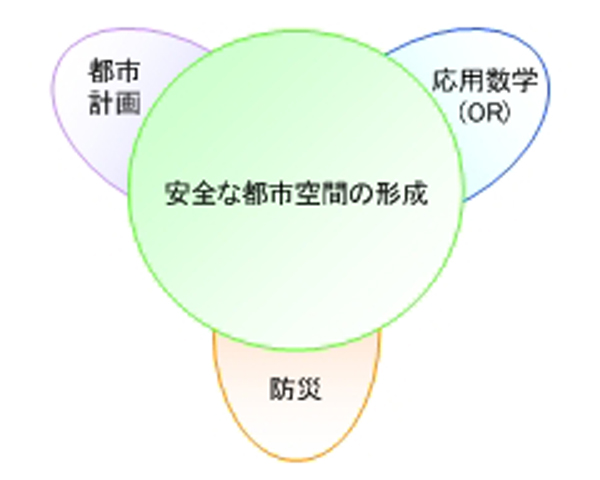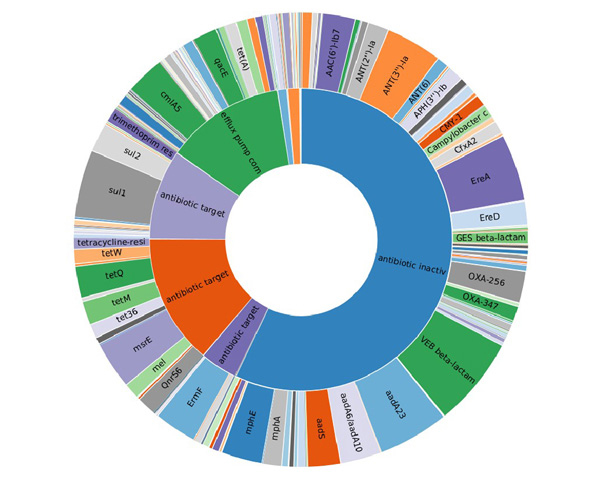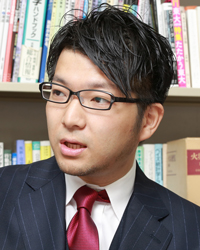- HOME
- Research
- Research Category
- Planning for Disaster Risk Reduction Hiroi - Kasuga - Otsuyama - Yotsui Laboratory
Planning for Disaster Risk Reduction Hiroi - Kasuga - Otsuyama - Yotsui Laboratory
Risk assessment and behavior simulation for disaster risk reduction

Research Interest: Formation of Safer Urban Space
- We are conducting a wide variety of research centering on the theme of "urban disaster risk reduction."
What is the goal of the city's "safety" function, and who evaluates it? And how do we balance that with other urban features such as convenience and comfortability? Our laboratory is researching the system design and planning that provide clues to these issues from the perspective of urban and community planning. We use a variety of research methodologies, including field surveys in disaster impacted areas, questionnaire surveys, disaggregate models, OR, Bayesian statistics, machine learning, simulations, and developing workshop tools. Our goal is not only for developing models and visualization of risks, but also implementation in society through the research process such as collecting original data, constructing our own theories, and disseminating research outputs.
Surveillance of microbial risk in urban water environment

Metagenomic analysis of antibiotic resistance genes in wastewater in Vietnam
- The health risk posed by antimicrobial-resistant bacteria (ARB), which is regarded as a silent pandemic, is a global concern. To control ARB, the perspective of One Health that integrates health of humans, domestic animals, and the environment is important. However, the surveillance of the environmental health has not been established yet. In urban area in developing countries, untreated sewage is discharged into the environment, leading to the spread of ARB. We analyze diverse ARB in water environment and sewage by comprehensive and high-throughput molecular methods to monitor urban public health status and to study the mitigation of ARB risk.
Column
☆Self Introduction
Born in Bunkyo-ku, Tokyo. I conduct research on urban disaster prevention. In this line of work, I am often asked why I chose my research field, but in my case, I happened upon this field by chance. When I was a university student, I was wandering around the library and happened to notice a book titled “Building Fire Prevention” written by Dr. Saburo Horiuchi. Until then, I had been interested in “urban analysis,” which uses mathematical models to explain the form and structure of cities, but as I read through the book, I became interested in the usage of mathematical methods to predict and analyze disaster phenomena and apply them to disaster prevention measures. If I had bought books on Amazon back then, I might not have had such a chance encounter. About five years later at the very start of my career, the head of the laboratory where I was a specially appointed assistant professor happened to be Dr. Ai Sekizawa, who had studied in Dr. Horiuchi's laboratory. I was then given detailed guidance on Fire Following Earthquakes. Perhaps because my second hometown is Nagoya, where I lived for about four years, I am particularly fond of underground public spaces in cities. I also like rice, whiskey soda, and coffee.
☆Views on Prof. Hiroi from laboratory members
・He is calm and gentle! He pursues his research with passion.
・He is very accommodating and thinks about his students first.
・He is highly intelligent and with a good sense of humor.
☆Self Introduction
Born in Bunkyo-ku, Tokyo. I conduct research on urban disaster prevention. In this line of work, I am often asked why I chose my research field, but in my case, I happened upon this field by chance. When I was a university student, I was wandering around the library and happened to notice a book titled “Building Fire Prevention” written by Dr. Saburo Horiuchi. Until then, I had been interested in “urban analysis,” which uses mathematical models to explain the form and structure of cities, but as I read through the book, I became interested in the usage of mathematical methods to predict and analyze disaster phenomena and apply them to disaster prevention measures. If I had bought books on Amazon back then, I might not have had such a chance encounter. About five years later at the very start of my career, the head of the laboratory where I was a specially appointed assistant professor happened to be Dr. Ai Sekizawa, who had studied in Dr. Horiuchi's laboratory. I was then given detailed guidance on Fire Following Earthquakes. Perhaps because my second hometown is Nagoya, where I lived for about four years, I am particularly fond of underground public spaces in cities. I also like rice, whiskey soda, and coffee.
☆Views on Prof. Hiroi from laboratory members
・He is calm and gentle! He pursues his research with passion.
・He is very accommodating and thinks about his students first.
・He is highly intelligent and with a good sense of humor.
Member

-
- Professor
U HIROI
Research Area: Urban Planning, Risk Engineering, Disaster Information, Fire Engineering
- Professor
Associate Professor Ikuro KASUGA ( Research Area: Water Environment Engineering, Environmental
Microbiology Engineering, Urban Water Supply&Treatment )
Project Lecturer Kensuke OTSUYAMA
Research Associate Saki YOTSUI
Project Research Associate Kaori ISAWA
Laboratory Homepage
Tags

